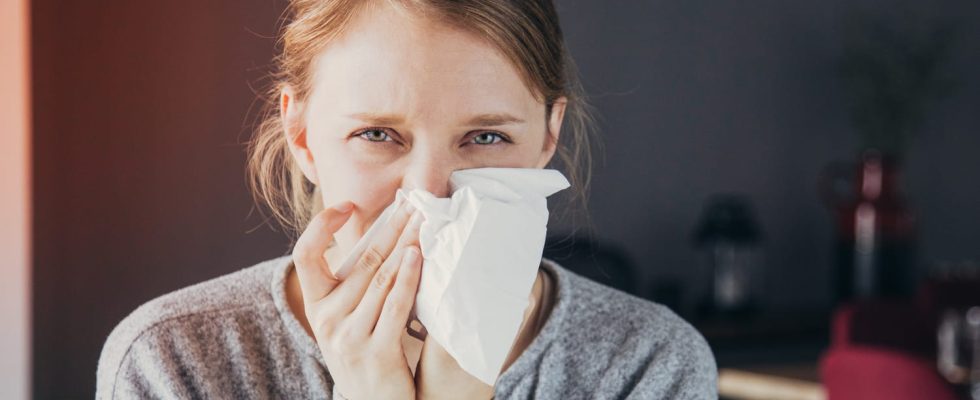Sneezing, runny nose…We can also present allergy symptoms in autumn, confirms Dr Isabelle Bossé, allergist, president of the French union of allergists.
And no, even in autumnallergy sufferers are not completely at peace because some pollen are still rampant. Which ? What to do ? Do you still need to take medication? Advice from our allergist doctor.
What pollen allergies are common in autumn?
A peak of pollen grasses, much less strong than that of spring but sufficient to cause allergies, can occur until the end of September or even October. Autumn also marks the return of herbaceous plantsnotably the plantain, mugwort and ragweed in the Rhône-Alpes region, which are particularly allergenic. The autumn weather, which alternates between humid heat and dry cold, encourages the proliferation of pollen in the air.
What are other causes of allergies in fall?
► Mites: The main allergy of fall is dust mite allergy. These nestle in bedding, carpets, rugs, curtains as well as in clothing, and cause irritation of the nose, throat and trachea. “Autumn is a breeding period for mites which proliferate in mildness and humidity. They develop preferentially in interiors heated to more than 19 degrees“, indicates Dr Isabelle Bossé. And for good reason, we tend to ventilate less when it is cold outside.
► Mold, which are located in damp places such as bathrooms, kitchens or cellars, can also cause allergies. “But this type of allergy remains mainly the prerogative of unsanitary homes, and the most allergenic molds are those of summer which develop on crops, vegetation, and which are suspended in the air. To date, there are only two skin test allergens available to test for mold. Generally, theMold allergy results from a mixture of dust mites, mycological toxinsit is not a common allergy“, nuance the allergist.
What are the symptoms of a fall allergy?
The symptoms of an allergy in the fall are similar to those in the spring: sneezing, runny nose, itchy eyes, stuffy nose, cough, asthma. However, this is not no violent seizures like those that can occur in spring when there is a pollen peak. “Clinical signs are chronic, every morning and every evening. A fall allergy can also result in asthma, associated or not with rhinitis, in which case it is more a case of nocturnal asthma because the mites develop in beds. The allergy then results in nighttime cough, stuffy nose in the evening and which slows down falling asleep“, explains the specialist.
Beyond environmental prevention measures, the treatment of an autumn allergy is based on taking antihistamine in tablet form for adults and syrup for children. Of the nasal drops and eye drops can also be administered in case of nose and eye symptoms. In case of moderate to severe symptoms that disrupt sleep, desensitization to dust mites is recommended. “These treatments must be taken for a minimum of 3 years. It is the only treatment that has the power to modify the immune system to make symptoms disappear and to avoid taking medications.“, continues the president of the French union of allergists.
What prevention to protect against a fall allergy?
Several environmental measures can be taken to protect against an allergy in the fall:
- Replace the bedding if it is too old, insulate it with specifically anti-mite medical covers and pillowcases which prevent mites from passing towards the sleeper.
- To do the housework regularly.
- Ventilate for 20 minutes morning and evening.
- Wash sheets often at 60°.
- Avoid accumulating rugs, cushions, etc. which are secondary reservoirs for mites. The main reservoir is bedding, even if there is also some in sofas, cushions, throws.
- Do not heat above 18° the bedroom and living rooms at 19°.
- Prevent animals from entering the rooms.
- Do not use anti-mite spray. It is best to ventilate and add baking soda.
- Vacuum the mattress with a good vacuum cleaner.
Thanks to Dr Isabelle Bossé, allergist, president of the French union of allergists.
